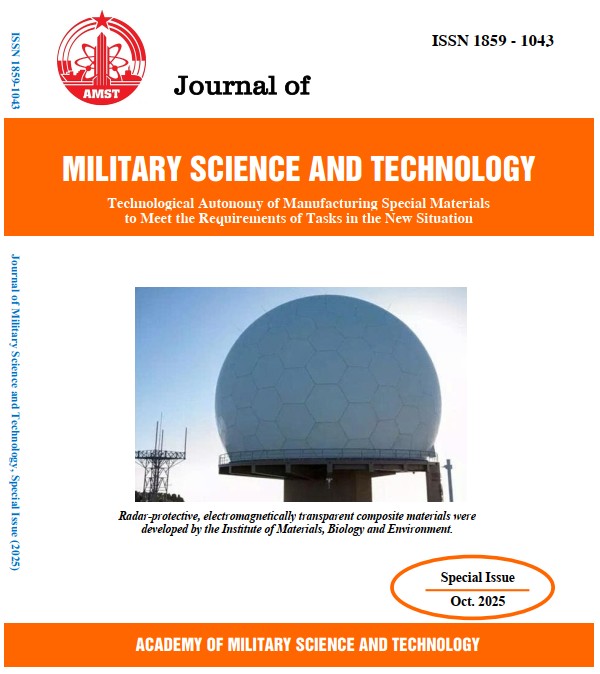Evaluation of corrosion inhibition efficiency of Inkort 8MZ.VN applied in diesel generator cooling system operating in marine environment
68 viewsDOI:
https://doi.org/10.54939/1859-1043.j.mst.IMBE.2025.228-234Keywords:
Steel CT3; Corrosion inhibitor; inkort 8MZ; Corrosion in NaCl solution; Electrochemistry.Abstract
This study investigates the corrosion inhibition performance of the Inkort 8MZ.VN inhibitor on CT3 carbon steel in 3.5% NaCl solution, corresponding to the salinity of seawater in Vietnamese coastal regions. The optimal inhibition efficiency (> 99%) was achieved with 2% Inkort 8MZ.VN, as evidenced by a significant decrease in corrosion rate, reduction in anodic/cathodic current densities, and a two-order-of-magnitude increase in total corrosion resistance (Rₙ = Rfilm + Rct). EIS analysis using a simulated Randles circuit confirmed the formation of a protective film (Rfilm) atop the electrical double layer, leading to reduced Cdl and enhanced Rct. These effects are consistent with microstructural observations from SEM. The results demonstrate that Inkort 8MZ.VN at its optimal concentration effectively protects against chloride-induced corrosion in diesel generator cooling systems operating in marine environment.
References
[1]. Finsgar, M., and J. Jackson, “Application of corrosion inhibitors for steels in acidic media for the oil and gas industry: A review,” Corrosion Science, 172, p. 108635, (2020).
[2]. Feliu, S. Jr., V. Barranco, et al., “Advances in electrochemical methods for studying corrosion of steels in chloride environments,” Metals, 10(6), p. 775, (2020). DOI: https://doi.org/10.3390/met10060775
[3]. Verma, C., E. E. Ebenso, and M. A. Quraishi, “Organic corrosion inhibitors for industrial applications: Progress and challenges,” Journal of Molecular Liquids, 321, p. 114385, (2021).
[4]. De Ketelaere, E., D. Moed, M. Vanoppen, et al., “Sodium silicate corrosion inhibition behaviour in saline environments,” Corrosion Science, 217, p. 111119, (2022). DOI: https://doi.org/10.1016/j.corsci.2023.111119
[5]. Li, J., et al., “Sodium silicate as a corrosion inhibitor for AZ31 magnesium alloy in chloride solutions,” Surface and Coatings Technology, 476, p. 129115, (2024).
[6]. Ahmed, M. A., et al., “Recent developments in eco-friendly corrosion inhibitors: A critical review,” Journal of Molecular Liquids, 398, p. 123456, (2024).
[7]. Kaya, S., et al., “Theoretical insights into silicate-based inhibitors for steel corrosion,” Journal of the Taiwan Institute of Chemical Engineers, 132, p. 104133, (2022).
[8]. Shi, W., et al., “Application of potentiodynamic polarization for corrosion rate determination of steel,” Electrochimica Acta, 388, p. 138552, (2021).
[9]. “Advances in impedance spectroscopy for inhibitor evaluation,” International Journal of Corrosion Scale Inhibition, 11(3), pp. 1303–1318, (2022).
[10]. Zhang, R., D. Sur, et al., “Bayesian assessment of equivalent circuit models in corrosion analysis,” Electrochimica Acta, 481, p. 142345, (2024).
[11]. Mainier, F. B., “Proposal of the use sodium silicate as a corrosion inhibitor for carbon steel,” International Journal of Advanced Engineering Research and Science, (2018).
[12]. “EIS technology for film-forming inhibitors,” International Journal of Corrosion Scale Inhibition, 11(3), pp. 1303–1318, (2022).







